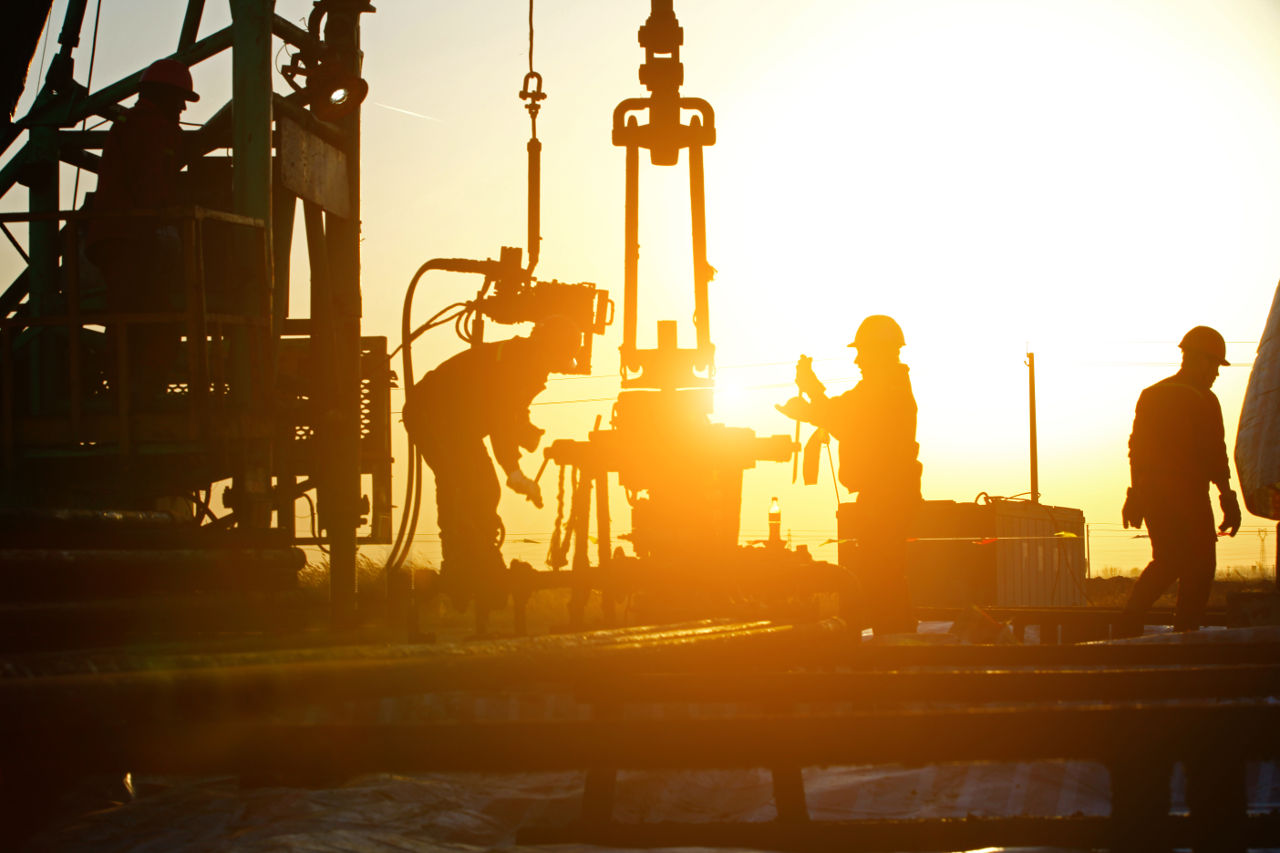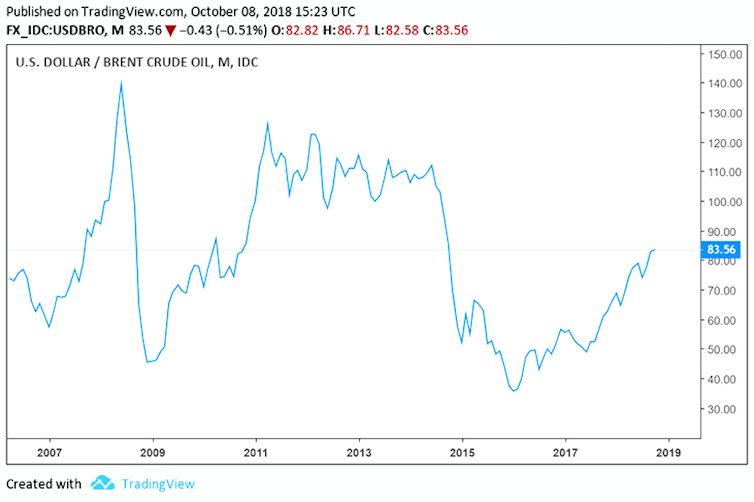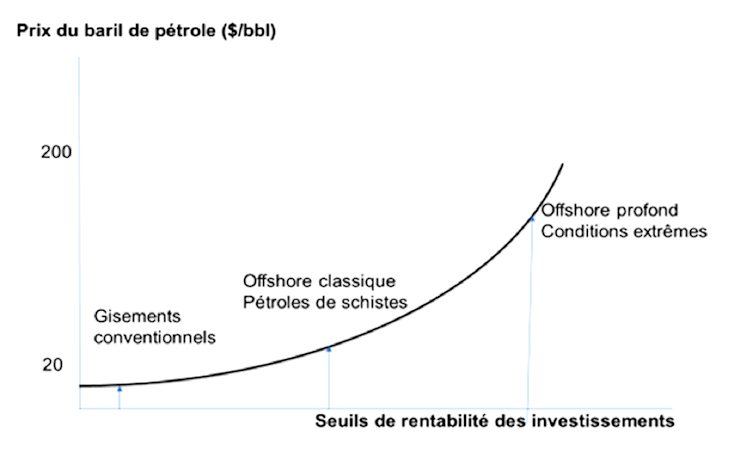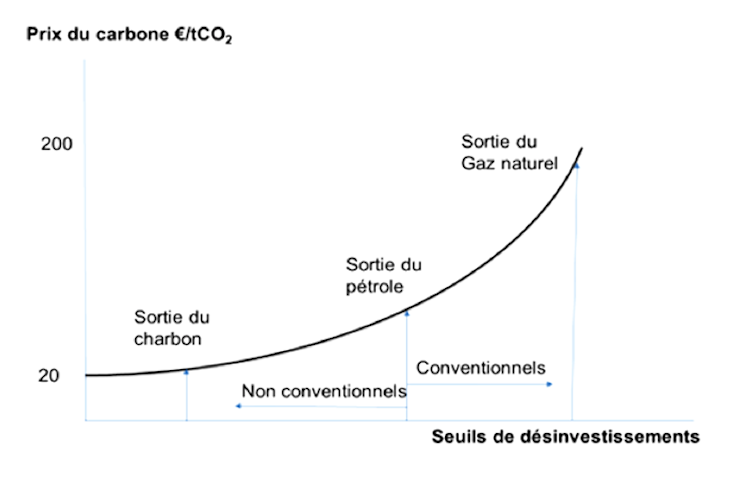Oil at over $80, bad for the economy, good for the climate?
On leaving the French government, Nicolas Hulot cited the rise in greenhouse gas emissions in 2017 as one of the reasons for his resignation. This rise, which is highly damaging to the climate, is primarily the result of the fall in oil prices between 2014 and 2017; This has boosted activity and encouraged us to consume more petroleum products, which have become less costly for our wallets.
Christian de Perthuis, University of Paris Dauphine - PSL and Boris Solier, University of Montpellier

Shutterstock
The situation reversed in 2018: at over $80 a barrel, Brent crude reached its highest price in four years in early October (see figure below).
Bad news for the economy, but a virtuous incentive for the climate? Let's take a closer look.

tradingview.com
Why high oil prices weigh on the economy
Rising oil prices erode household purchasing power, in much the same way as a carbon tax without any redistribution mechanism towards low-income households, and weigh on the production costs of energy-intensive activities.
According to the Mésange macroeconometric model used by the French Ministry of the Economy, a 20% rise in the price of oil per barrel leads to a 0.2 point reduction in GDP after two years. The doubling of the price of crude over the last year and a half could therefore cost a point of growth. Here's a word to the wise!
We may well ask whether this short-term vision is not simplistic. The rise in the price of oil should only result in a transfer of value between producer and consumer, and thus lead to a geographical shift in added value rather than a decline in activity.
The reasoning holds if we consider only the flow of goods. But we also need to consider stocks of debt. In Western economies marked by decades of indebtedness, the weight of private debt is a major fragility of the system. We saw this during the 2008 crisis, for example, when oil prices in excess of $140 a barrel made it impossible for a growing number of American households to repay their property debts, and precipitated the collapse of the American investment bank Lehman Brothers.
The effect of rising oil prices on the stock of debt that is structurally weakening economies must therefore be taken into account in order to correctly anticipate its economic impact.
Expensive oil, not so good for the climate
On the demand side, higher oil prices encourage consumers to be more careful when buying fuels, heating oil and gas, whose prices are increasingly correlated with oil prices. This penalizes the consumer, but is good for the climate. For an environmental activist, it's a toss-up between losing a point of growth and saving the planet.
At the same time, however, the rise in oil prices provides another incentive for producers. As the price per barrel rises, it becomes increasingly profitable to extract oil from the least well-situated and therefore most expensive deposits: a few thousand meters under the sea, in the Arctic zone or in oil shale. With each upward cycle in the price of oil, we see a resurgence in investment in exploration and production, which will be responsible for tomorrow'sCO2 emissions.
This is the diabolical side of the oil rent economy for the climate. It has two faces: scarcity rent and differential rent.
When the relative scarcity of oil increases, for geological or geopolitical reasons, the price per barrel soars. It can exceed $100 a barrel, as in 2008 or 2011-2014. Rising oil prices extend the scarcity rent captured by producers, encouraging them to invest in new capacities and unconventional extraction technologies... and thus increasing the potential forCO2 emissions in the medium and long term (see figure below).

Over-supply eventually catches up with demand - slowed down by rising prices - and causes prices to fall. This is the cyclical phenomenon of "oil counter-shocks". This drop stimulates demand and encourages a resumption ofCO2 emissions. This is bad news for the climate in the short term, all the more so as producers are showing unexpected resilience to falling prices. This is where the second side of the oil rent comes into play: the differential rent.
The vast majority of producers pocket a second bonus, resulting from the difference between their operating costs and those of fields that are less well located or produce lower-quality crude. When the barrel falls to $20, the least well-positioned producers suffer. But the Ghawar field in Saudi Arabia is still very profitable: its production cost is around 5 to 7 dollars a barrel. Its operator is not about to exit the market.
It's as if we'll never get out of it! However, there is a way out of the vicious circle: carbon pricing, which provides climate-friendly incentives for both producers and consumers. A recent publication by the Climate Economics Chair on energy transition and the ticking of the climate clock explores this aspect in greater depth.
Carbon rent versus oil rent
The linchpin of the carbon rent economy is the value placed on climate protection via aCO2 price. This price is a cost that must be applied to all anthropogenicCO2 emissions. It makes no difference whether it is introduced into the economy via a tax, a permit market or, more implicitly, a set of standards. Its distinctive feature is that it provides the right incentives on both the supply and demand sides.
On the consumer side, the introduction of aCO2 price increases the price of different energy sources in proportion to their respectiveCO2 content. The incentives introduced are twofold: on the one hand, to save energy whose average cost is rising; on the other, to substitute non- or low-carbon sources for the mostCO2-emitting sources.
In the carbon rent economy, virtuous incentives for the consumer are no longer counterbalanced by an opposite effect on the producer's side, who is encouraged by the rising price to expand his fossil fuel production capacity. As soon as the price of carbon becomes the beacon of the energy transition, it becomes less and less profitable to invest in fossil fuels as the cost ofCO2 rises (see figure below). The rising cost ofCO2 steers both producers and consumers away fromCO2-emitting fossil fuels.

As long as the carbon-rent economy has not supplanted the oil-rent economy, there will be a contradiction between the way markets work and the objective of reducing CO2. And as a result, a contradiction between the objectives set by the Minister for the Environment and the traditional indicators of employment, purchasing power and growth that guide government action.![]()
Christian de Perthuis, Professor of Economics, founder of the Climate Economics Chair, Paris Dauphine University - PSL and Boris Solier, Senior Lecturer in Economics, research associate at the Climate Economics Chair (Paris-Dauphine), University of Montpellier
The original version of this article was published on The Conversation.